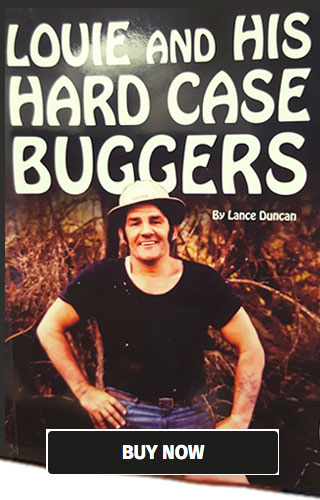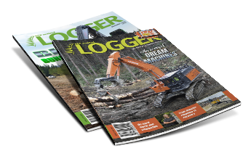"CHOICE,” EXCLAIMS IRON TESTER, SHAUN FIELD, AS HE manipulates the Hawkeye grapple carriage to seek a meaty Douglas-fir way out in front of the Harvestline.
A bloody good choice, I remark to the Harvestline’s owner, Mike Harris, watching intently to see how the grapple latches onto the target, then rises effortlessly from the jumble of slash on the ground to haul its prize back to base, before being sent out for another tree. Cycle time: just a couple of minutes.
Gotta love a yarder that takes people away from dangerous situations on steep slopes, whilst making the task simple and quick. But we’re not on a steep slope.
Anyone stumbling into this remote block on the eastern flank of the Kaingaroa Forest without knowing the circumstances would be wondering what the hell a yarder/yoader is doing here in the first place. Surely this is prime ground-base country that a skidder or forwarder could easily cope with.
Well, yes and no. Some areas within this block – a stone’s throw from the remote community of Minginui – are well suited to groundbase harvesting and that’s already going on. But in the delicate, incised gullies that cover about half of this block such activity is a big environmental no-no.
The gullies consist of fragile soils that can easily be washed away if disturbed. They form a unique landscape that deserves protection, even if it is going to be covered with plantation forest again in the future.
Mike Harris knows this. So does forest manager, Timberlands, which inserted a requirement for a lightweight yarder to be used in these locations in the harvesting contract that Mike signed. Harvestlines have become the light yarder of choice for Kiwi contractors trying to tread lightly on fragile soils or for just getting into difficult places to reach harvestable wood, regardless of whether it’s in a commercial forest or growing on a farm woodlot.
The machine owned by Mike Harris and his wife and business partner, Chrissy, is number 48 to roll out of the EMS workshop in Rotorua since the first Harvestline was designed and built almost three decades ago, and it’s the 33rd two-drum interlocked model, most of which have been constructed in just the last five years. NZ Logger tested one of the first interlocked Harvestlines produced by EMS in 2016 – a three-drum model built onto a nearly-new Cat 330 operated by Frank Carran on woodlots in the Waikato and Bay of Plenty.
That was before EMS introduced the Hawkeye grapple carriage, which has essentially made the three-drum redundant.
We are well overdue to have a look at a two-drum machine and Mike’s machine offered the perfect opportunity, as he chose to put the Harvestline onto an identical Volvo 380 base to his harvester/ processor that we tested a couple of years back.
It’s the first purpose-built Volvo forestry tracked carrier to be converted into a Harvestline and we were curious to see...






